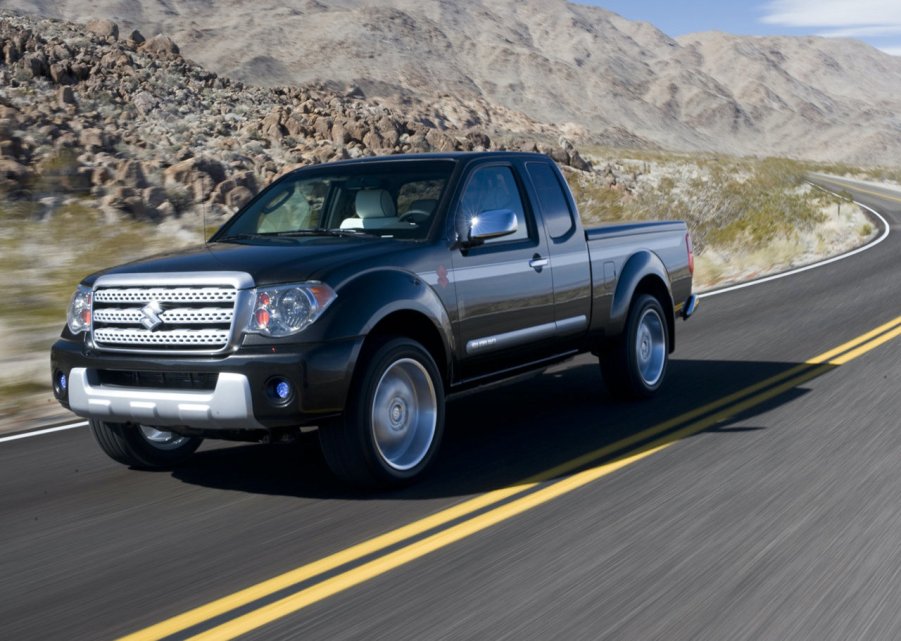
Want a Cheaper Nissan Frontier? Buy a Suzuki Equator
Much to the consumers’ advantage, platform sharing between brands has been commonplace over the past few decades. Do you want a Mercedes-Benz SLK, but don’t want to shell out the extra money? Buy a Chrysler Crossfire. Want a Nissan Frontier, but don’t want to spend an extra couple grand? Then buy a Suzuki Equator.
A Suzuki what?
The Suzuki Equator was produced from 2009 to 2012 and was basically a rebadged Nissan Frontier. We know what you’re probably thinking: Why would anyone want a rebadged Frontier when they could just buy a Frontier? Exactly! Well, we don’t completely know either but at the time, Suzuki didn’t have any trucks to sell and working with Nissan was one solution. After all, the Frontier has been around forever, so why not go with a tried-and-tested truck?
One of the main reasons for the cross-sharing, though, was that Suzuki thought that their strong and loyal motorcycle fan base would need something to haul their Suzuki motorcycles and other toys in, so why not offer them a truck of the same brand.

Is it any different than a Frontier?
Of course, it is! Kind of. The Suzuki Equator offered a bolder front grille and rounded headlights that looked more at home on a Toyota Tacoma than on a Frontier. But, aside from the revised front end and the obvious Suzuki badging, that was about it.
Looks aside, everything else about the Equator screamed Frontier. It was offered in both short and long-bed configurations and came with a choice of engines. Buyers could either opt for a 2.5-liter four-cylinder engine that produced 152 horsepower and 171 lb-ft of torque or a more powerful 4.0-liter V6 that pumped out 261 horsepower and 281 lb-ft of torque. The Equator also came in a two- or four-wheel-drive configuration as well.
It’s the same on the inside
The interior of the Equator is virtually identical to the Frontier as well. It has the same hard plastics and cloth seats, and even the same orange lighting. It’s functional, though, as the two-tiered glove box carried over as did the multitude of storage cubbies and cupholders.
The one thing that the Suzuki truck didn’t have, however, were leather seats, Nissan kept that for themselves. As you could imagine, the rest of the truck’s interior was erred on the side of being utilitarian, as an AM/FM/CD radio deck, along with some hard buttons and dials for the HVAC controls, were front and center. Nope, no fancy touchscreen infotainment systems to see here.

Were they priced the same?
We would have thought that the Suzuki Equator would be priced less than the Frontier, however, it was surprisingly sold for around the same amount. It started at just over $18,000 and topped around $31,000 for the top trim with all of the options. However, the Suzuki did carry a longer 7-year/100,000-mile warranty, which was two years and 40,000 miles longer than the Nissan.
In the end, Suzuki was projecting, and hoping, that they would sell around 20,000 Equators every year. But in reality, Suzuki only sold about 2,000 units per year until production ended when the brand’s U.S. car sales dissolved in 2012.
It’s a sad ending, but you can still get your hands on a Suzuki Equator for a very low price anywhere from $5,000 to $10,000 on the used market. Nissan Frontiers of the same vintage and trim level are going for about $3,000 more. It’s amazing how a badge change can affect resale value, but if you need a truck, it’s a good way to keep some money in your pocket.



